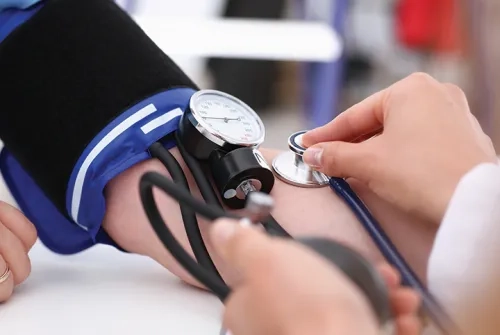Alo Yeditepe
Alo Yeditepe
Blood Pressure Holter
What is Blood Pressure Holter?
When patients go about their regular business, blood pressure is monitored and recorded using a portable electronic device at predetermined intervals for 24 hours.
Who is Tension Holter Applied to?
Blood pressure Holter is an examination that may be required in blood pressure monitoring. With the aid of blood pressure measurement equipment, one may comprehend high (hypertension) or extremely low (hypotension) blood pressure with certain lower and upper limits. In some circumstances, in addition to the measurements taken in the hospital, it may also be important to know the measurements of the patient in his or her own environment during daily activities, even while sleeping.
Why is Blood Pressure Holter Applied?
- In the finalization of the diagnosis of high blood pressure (hypertension),
- In the presence of suspicion of white coat blood pressure,
- To evaluate the effect and success of treatment in patients treated for hypertension,
- In those with high blood pressure suspicion at night /during sleep hours,
- When there is extreme variability in the values of blood pressure found in various measurements,
- In the evaluation of patients who are resistant to treatment and have high blood pressure measured in the hospital,
- In the evaluation of the effect of nervous system disorders accompanying some systemic diseases (such as diabetes) on blood pressure, this holter application is required.
How to Attach a Blood Pressure Holter?
- The Holter sleeve (sleeve wrapped around the arm) and a control unit that stores the measured values in memory make up the blood pressure machine.
- Like with any other blood pressure monitor, such as a sleeve, the gadget is wrapped around the patient's right or left arm and hung in the clothing pocket or the trouser belt.
- The machine is set up to take blood pressure readings as needed and at the appropriate intervals (measurement programming is done every 60 minutes during sleep at night and every 30 minutes during the daytime).
- The device automatically inflates the cuff at certain intervals during the day, measures blood pressure, and records to the memory.
- As they apply pressure to the arm at regular intervals, patients using blood thinners and those with sensitive skin may experience redness and bruising.
What Factors Must Be Considered While Attaching a Blood Pressure Holter Device?
- Continuing as usual with the person's daily activities while wearing a blood pressure monitor
- If work or movement is present on the arm that the sleeve is wrapped around, it is paused and the arm is kept fully extended until the sleeve stops swelling so that the measurement is accurate when the device is measuring (not folded from the elbow)
- The use of electrical or electronic equipment, operating a motor vehicle, or using a mobile phone is not inconvenient for someone wearing a blood pressure Holter device.
- Not showering or bathing the patient during the time the device is attached
- The sleeve must not be loosened or removed.
What to Do If the Sleeve On the Arm Dislodges During Holter Recording?
- It is impossible to take a proper measurement with a loosened, dislodged sleeve. Due to this, the sleeve needs to be re-wrapped in the same spot of the arm fully inserted.
- The elbow opening should be the direction in which the sleeved hose is facing.
- Call the following phone numbers if you have any doubts about rewinding the sleeve or if it is wrapped but does not measure at the correct intervals.
For the physician: 0216 578 42 50 • For nurse: 0216 578 49 98
This content was prepared by Yeditepe University Hospitals Medical Editorial Board.
”
See Also
- What is Heart Rhythm Disorder (Arrhythmia)? Symptoms and Causes
- What is Sudden Cardiac Death? What are the Symptoms?
- Risk Factors in Heart Diseases
- Heart Valve Diseases and Treatment Methods
- How Do Heart Disease Risk Factors Affect Women and Men?
- What is a Heart Attack? What are the Symptoms of a Heart Attack?
- What is Broken Heart Syndrome? Symptoms and Treatment
- Carotid Artery Disease
- What is Renal Denervation?
- What is Intravenous Ultrasound (IVUS)?
- Renal Denervation in Hypertension Treatment
- What is TAVI?
- Is Your Heart Ready For Winter?
- The Risk of High Blood Pressure Increases as You Go to High Altitudes
- By 2025, Hypertension Patients Are Expected to Reach 1.5 Billion
- Misconceptions about the Female Heart
- Experts Warn: In Case of Fainting, Consult a Cardiologist First
- Causes of Arhythmia Can be Displayed in 3D
- Coronary CT Angiography (Virtual Angiography)
- Effort Test
- Heart Attack Causes and Symptoms
- Can Permanent Treatment Be Provided for Rhythm Disorders?
- Technique Developed by a Turkish Doctor Has Become Part of Literature; Is Now an Alternative to Pacemakers
- Professors from America Came to Watch the Technique Developed by the Turkish Physician on Site!
Alo Yeditepe





